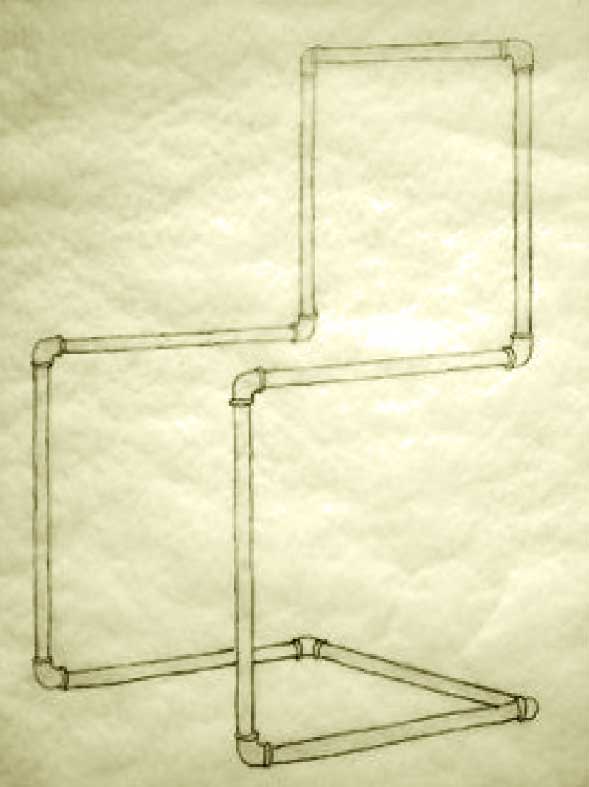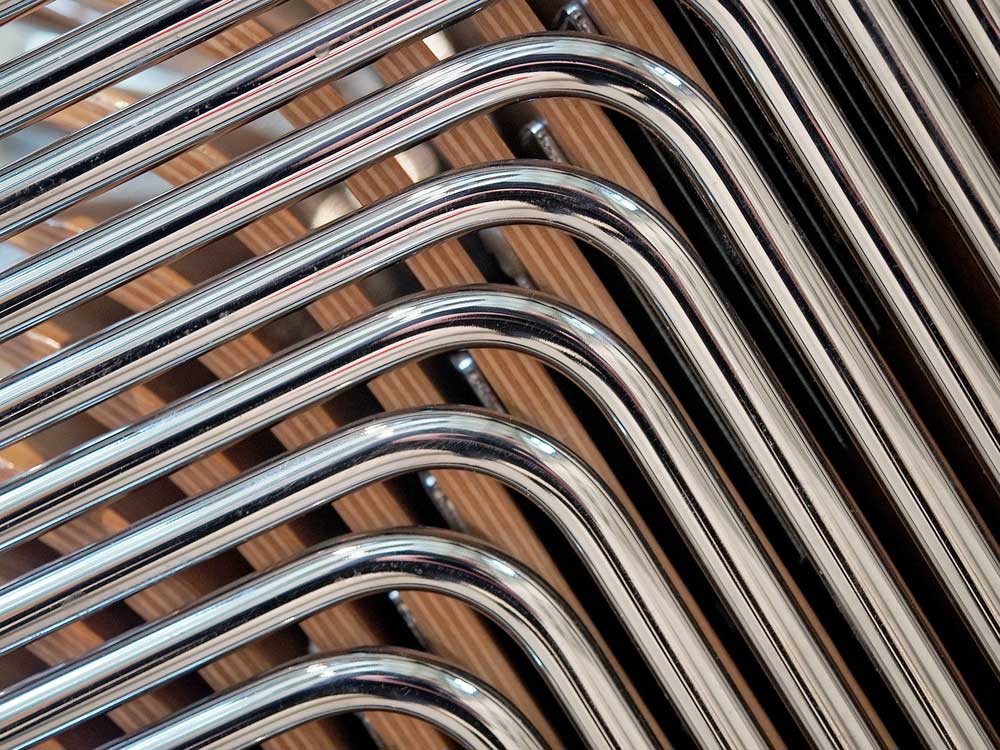Cantilever chair history
The name
 Merriam-Webster dictionary defines cantilever as “a projecting beam or member supported at only one end.” However, the etymology of this word (first used in the 17th century) seems to be obscure. In the 19th century the word came to be used with increasing frequency because technological advances made it possible to use the cantilever principle in construction of steel buildings and bridges. The industry term took on a narrower sense of something that is built without additional support normally provided by columns.
Merriam-Webster dictionary defines cantilever as “a projecting beam or member supported at only one end.” However, the etymology of this word (first used in the 17th century) seems to be obscure. In the 19th century the word came to be used with increasing frequency because technological advances made it possible to use the cantilever principle in construction of steel buildings and bridges. The industry term took on a narrower sense of something that is built without additional support normally provided by columns.
Cantilever chairs
 It is believed that the first cantilever chair was designed by Mart Stam as early as 1924 (he received the patent in 1926). Curiously, Stam’s original design is different from just about any cantilever chair ever made because it does not feature continuous bent elements. Instead, the construction of the first cantilever chair relies on using joints. Perhaps Stam simply did not trust the structural integrity of steel pipes at that point in time? Since 1924, many designers used this concept to create their own chairs: Ludwig Mies van der Rohe, Marcel Breuer, Giuseppe Terragni, Alvar Aalto, Verner Panton and others. Many examples of cantilever chairs departed from the now traditional look of tubular polished steel. Wood and even plastic have been used in certain designs. “Reverse” cantilever chairs have also been produced which have an advantage of allowing more space in the front. Recognizing the need to have chairs that can be quickly put away when not needed, designers also developed stackable cantilever chairs. Of course, the most common cantilever chair you will ever see is Poäng, a cantilevered bentwood model from IKEA.
It is believed that the first cantilever chair was designed by Mart Stam as early as 1924 (he received the patent in 1926). Curiously, Stam’s original design is different from just about any cantilever chair ever made because it does not feature continuous bent elements. Instead, the construction of the first cantilever chair relies on using joints. Perhaps Stam simply did not trust the structural integrity of steel pipes at that point in time? Since 1924, many designers used this concept to create their own chairs: Ludwig Mies van der Rohe, Marcel Breuer, Giuseppe Terragni, Alvar Aalto, Verner Panton and others. Many examples of cantilever chairs departed from the now traditional look of tubular polished steel. Wood and even plastic have been used in certain designs. “Reverse” cantilever chairs have also been produced which have an advantage of allowing more space in the front. Recognizing the need to have chairs that can be quickly put away when not needed, designers also developed stackable cantilever chairs. Of course, the most common cantilever chair you will ever see is Poäng, a cantilevered bentwood model from IKEA.

Why designers like cantilever chairs
There are two main reasons why designers like to use cantilever chairs and similarly built furniture pieces. High end interior design is always responsive to modern technologies. As more materials become structurally capable of being used in chairs there is a constant push to use them and see how they can take on unusual forms while preserving functionality. The same trend has existed in architecture for many decades and the results can be seen in many fascinating buildings around the world. Another reason is that modern design favors organic looking shapes that bend and flow. Nature has been using cantilevers for millions of years. Despite the fact that columns have been created to imitate trees, there is really no such thing as columns in nature. Cantilever furniture is an easy way to achieve a natural modern look.
For a thorough discussion of cantilever furniture and architecture, take a look at this book:
